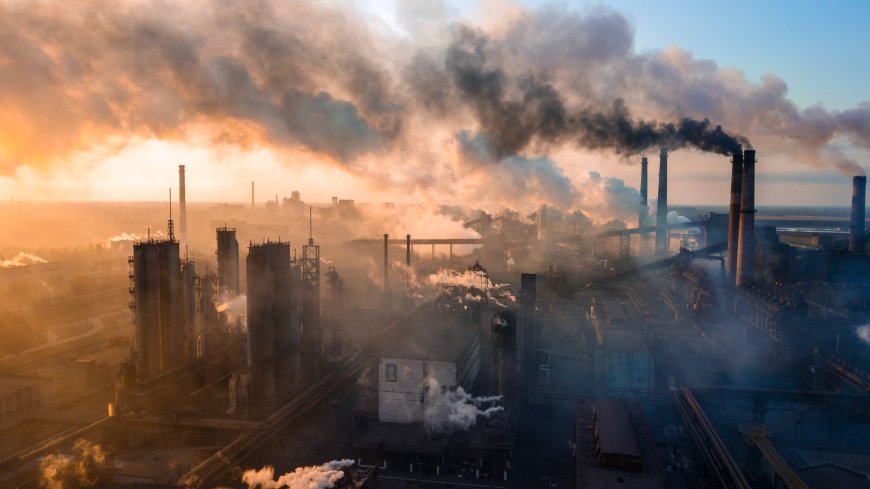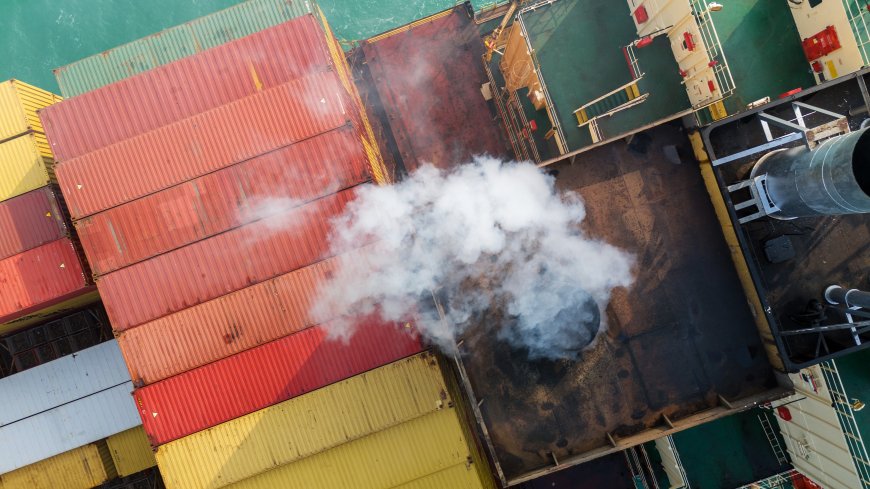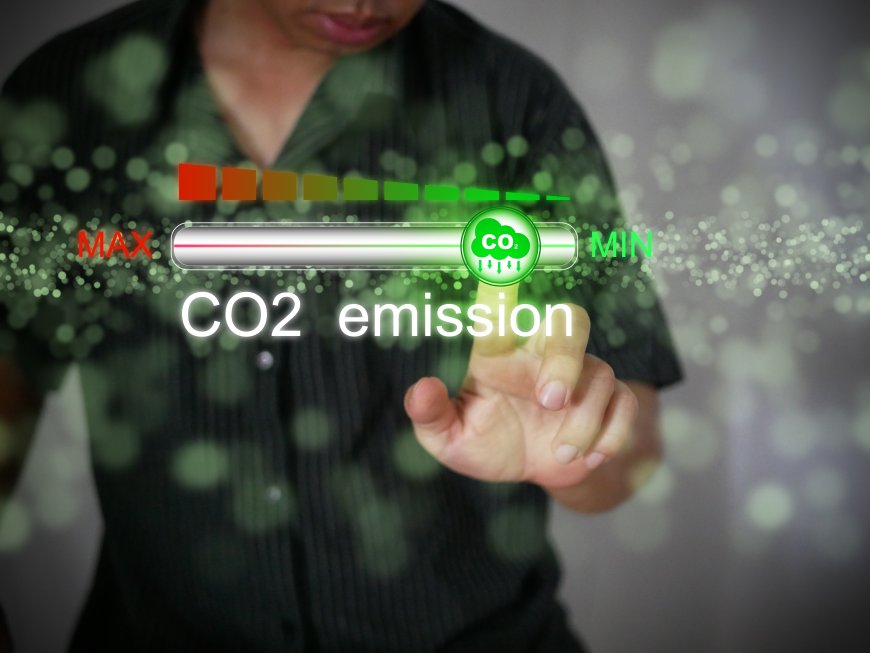Cut Carbon Emissions or Pay Up: What India's New Emission Rules Mean for Businesses
India’s latest emission rules require businesses to reduce carbon output or face financial penalties. Learn how compliance, reporting standards, and deadlines will affect industries.

India is experiencing phenomenal growth, but the challenge that comes with it is a huge one: that of ensuring progress while being planet-friendly. For several years, the industry has been manufacturing products and society has been bearing the cost of pollution in the form of climate change and poor air quality, among others.
Not anymore, though!
The Indian government has come up with a groundbreaking environmental policy (Carbon Credit Trading Scheme) that is going to be one of the most important in years. With this new rule, pollution has been commoditized and, in a way, companies are being told: you either take the carbon emissions reduction seriously or get ready to pay up for the right to pollute.
This is far more than a mere environmental policy; it is both a financial and operational requirement that will transform the carbon emissions scenario in India by 2026. Here are the adaptations every business should look out for.

What does Carbon Emissions mean? (The Simple Definition)
Before getting into the details of the rules, let's designate the problematic briefly.
What do Carbon Emissions mean?
The term carbon emissions indicate the release of the greenhouse gases (GHGs)—mostly Carbon Dioxide (CO2), but also methane and a few others—into the atmosphere. These gas emissions are the result of burning coal, oil, and gas, which are fossil fuels, the main sources of which are GHGs.
The atmosphere gets polluted with CO2 when a factory operates with electricity produced by coal or when a truck utilizing diesel delivers goods. The entire pollution is measured in terms of tonnes of CO2 equivalent, abbreviated as tCO2e.
The new rule introduced by the government aims to switch the source of carbon emissions, thereby driving the industries away from the use of polluting fuels towards the adoption of cleaner energy sources.
The New Rule: India's Carbon Credit Trading Scheme (CCTS)
The CCTS is the brand new legal structure, which takes over and consolidates previous schemes, that and riding the wave of the green revolution, in case of India, formalizes a market for carbon i.e., CCTS.
The CCTS: A Simple Breakdown
Let’s say the government determines an upper limit to the pollution proportionate to the production volume (this is termed emittance intensity).
The Goal (The Cut)
The company sectors where energy is most consumed, which are Cement, Steel, Aluminium, Fertilizers, and Refineries, are assigned the task of cutting a specific amount of their carbon emissions. For instance, the cement industry might have to cut its emissions by 2% to 3% in the first phase.
The Benefit (The Credit)
A company that invests in new technology and is able to bring its emissions down to below the target level gets Carbon Credit Certificates (CCCs) as a reward. Each CCC signifies one-ton reduction of CO2, which is the represented unit for this credit that can be sold and realized.
The Penalty (The Pay Up)
If a corporation does not attain its objective and emits more than the allowed limit it has two options: a) Acquire CCCs from the corporations that were able to reach their objective, or b) Incur a heavy financial penalty.
The CCTS makes it possible to turn reducing carbon emissions from an environmental cost into a potential new revenue stream.
The Impact: Decreasing Carbon Emissions Becomes Urgent
The CCTS along with similar global trends, such as the EU's Carbon Border Adjustment Mechanism (CBAM) which imposes a tax on carbon-intensive imports, have put carbon emissions reductions high on the list of priorities for Indian exporters' survival.
Who is Affected?
To begin with, the compliance mechanism is aimed at heavy industrial sectors (e.g., Cement, Iron & Steel, Petroleum Refineries) that report the highest pollution. Nevertheless, the CCTS indirectly influences even the smallest to the largest players in the market.
Big Emitters
They will either have to put in a lot of money into the development and deployment of cleaner technology or get credits at a high price.
Green Innovators
Companies those investing in renewable energy or clean tech now have a huge, government-supported market for their offerings.
Voluntary Sectors
Also, the companies that are outside the obligatory list (for example, agriculture and forestry) can still join in CO2 reduction projects and gain credits that are sellable in the new market, thus indicating a widespread green approach in the economy.
The Action Plan: The Way to Immediately Reduce Carbon Emissions
The present time is the best ever to act for the companies that intend to earn credits rather than buy them. The following are five concrete measures that will lead to the reduction of carbon emissions.
1. Make Energy Efficiency A Priority
It is the quickest and least expensive method of approaching the decreasing of carbon emissions issue.
You'll need to conduct an energy audit of your plant in a very thorough manner. Make the switch to LED lighting (can reduce the consumption by as much as 70%). Go for upgrading your equipment to new, energy-efficient ones (HVAC, boilers, motors).
Old boilers in many Indian textile mills have been replaced with highly efficient heat recovery systems, which has led to the mills saving not only in fuel costs but also in carbon emissions.
2. Use Renewable Energy For Power Needs
Look for power sources other than the grid for your electricity consumption.
You may either put up solar panels on your building's roof tops or use Corporate Power Purchase Agreements (CPPAs) to purchase electricity directly from a wind or solar farm.
How to Stop Carbon Emissions at the source
The transition from fossil fuel-generated electricity (Scope 2 emissions) to renewables leads to a significant drop in your CO2 output.
3. Optimize Your Supply Chain (Scope 3 Focus)
The carbon emissions from your suppliers and logistics count, too, as your carbon emissions do not stop at your factory gate!
Use suppliers that have green certifications or cleaner fuel. Optimize through rail transport instead of long-haul trucks or consolidate shipments.
4. Invest in Decarbonization Technologies
For the hard-to-abate sectors Cement and Steel, deep investment is required.
Carbon Capture, Utilization, and Storage (CCUS) or switching to green fuels like Green Hydrogen in industrial processes are examples of newer technologies to be explored. These are key to how to stop carbon emissions in high-heat processes.
5. Track Everything with Attention to Detail
You must under CCTS to accurately report every tonne of $\text{CO}_2$e that you emit.
Use strong tracking software. Create a clear baseline from your 2023-24 data and monitor progress monthly. Accurate reporting is the base for obtaining and trading your CCCs.

Wrapping Up: The Future of Indian Industry
The new emission rules of India are a huge signal: the industrial scene is changing, and sustainability is not an optional extra—it is a primary business strategy. The companies that consider reducing carbon emissions as a strategic opportunity to modernize and innovate will be the winners with a massive competitive advantage at home and also worldwide.
The time of unrestricted pollution is over. The coming years will determine which Indian companies will be at the forefront of the clean economy and which ones will just pay the price.
What's Your Reaction?
 Like
0
Like
0
 Dislike
0
Dislike
0
 Love
0
Love
0
 Funny
0
Funny
0
 Angry
0
Angry
0
 Sad
0
Sad
0
 Wow
0
Wow
0
























































































































































































